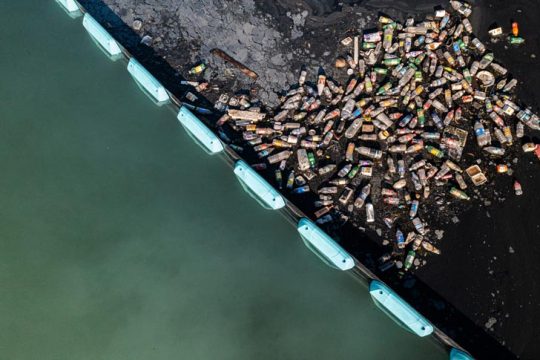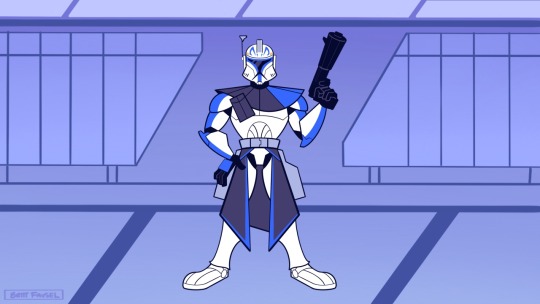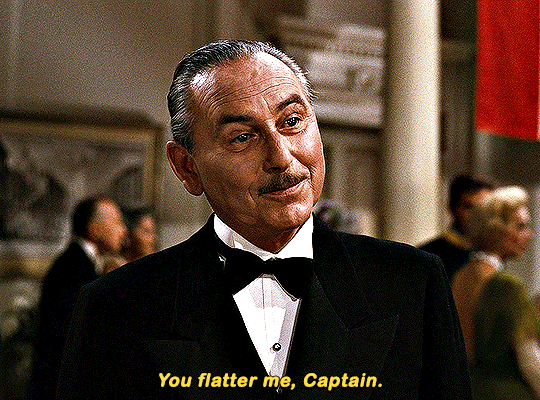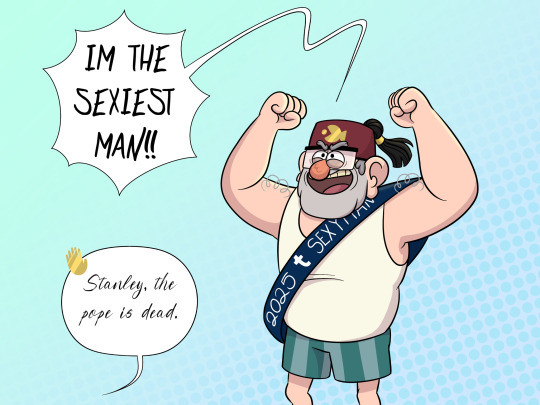Ink (she/her). INTJ. Late 20s. Writer, mostly for Star Wars: The Clone Wars. (Requests are currently closed.) Find past works on my Masterlist! Want to be tagged in future works? Sign up on my Taglist Form! Enjoy what I do? Here's a link to my Ko-Fi!
Don't wanna be here? Send us removal request.
Text




Arctic Auroras, Finnish Lapland
tiinautti
#winter#finland#aurora borealis#northern lights#astrophotography#photography#stunning landscapes#and the northern lights are always stunning
3K notes
·
View notes
Note
I keep reading that 90-99% of the world’s coral reefs is set to disappear by 2050, and recently I’ve read that they’re set to simply go extinct by 2100. Is that true?
Hi Anon!
You've hit on a topic that has really weighed on my heart for a long time. While climate change is a big focus of this blog, the environmental issue that I started my career in, and the one that often hits me hardest, is the loss of species and ecosystems.
To lose an entire species that took millions of years to evolve is a terrible loss—to lose the entirety of one of the most diverse and beautiful ecosystems on the planet is an almost unfathomable tragedy.
While I am extremely hopeful that a lot of damaged ecosystems and species will be able to rebound and adapt with the right protection and support, for a long time I couldn’t see a world where coral reefs would be able to survive—because even in the rosiest emissions scenarios, ocean warming would pass the threshold that they could withstand.
However, recently our understanding of that seems to be evolving. The bad news is that there is probably no future where coral reefs are not irreversibly altered by climate change—we will definitely lose coral species and many reefs as they are now and that is still deeply awful. The good news is there is increasing evidence that coral reefs as an ecosystem can survive in an altered but still biodiverse and beautiful form for future generations.
This study from the Hawaii Institute of Marine Biology created simulated coral reefs containing a variety of common coral species as well as all the other organisms found in reef ecosystems and exposed them to different levels of warming and acidification for two years. Based on prior models and research, it was expected that all the corals would die and the mini reef ecosystems would collapse…but they didn’t. After two years, coral cover was reduced and there were changes in the amount of calcification in the corals, but the altered reef still supported high levels of biodiversity.
There have also been increased observations of coral surviving or even doing well in warming situations where they would be expected to be totally wiped out. Efforts are underway to study those reefs to see if those conditions can be replicated elsewhere, but the big takeaway seems to be pointing towards the idea that if we remove other more immediately controllable stressors from coral reefs—things like overfishing, physical damage, pollution, etc.—some or even many of them will be able to survive the warming effects of climate change.
Our understanding of how to maintain coral in human care and regrow damaged reefs in their natural habitat is also increasing at a very fast pace. This means that there is a good chance that we can keep coral species that would otherwise be driven to extinction alive either in human care or more protected areas and potentially return them to their native habitat once we have controlled other threats.
I don’t want to sugarcoat things—coral reefs are in a tough spot with regard to climate change and many big, iconic reef ecosystems will probably be unrecognizably altered. I do not want to downplay how heartbreaking that is. But life finds a way and the consensus seems to be moving in the direction of coral reefs not being as doomed as was previously thought.
If you want to learn more about this I would highly recommend this podcast from How to Save a Planet:
As well as this recent very cool interview between Hank Green and the executive director of the Coral Reef Alliance, Heather Starck (the interview starts at 2:17):
youtube
#climate change#coral reefs#coral reef conservation#reef conservation#marine conservation#global warming#ask#coral bleaching#hope#hopepunk#science
365 notes
·
View notes
Text




The Addams Family (1991) dir. Barry Sonnenfeld
15K notes
·
View notes
Text
From the article:
Spain’s grid ran entirely on renewable energy for the first time on April 16, with wind, solar, and hydro meeting all peninsular electricity demand during a weekday. Five days later, solar set a new record, generating 20,120 MW of instantaneous power – covering 78.6% of demand and 61.5% of the grid mix.
#renewable energy#green energy#clean energy#good news#hope#climate change#global warming#climate anxiety#environment#ecology#fossil fuels#solar energy#wind energy#hydroelectric energy#science
2K notes
·
View notes
Text

"You was my brother, Anakin. I loved you." || Star Wars - Episode III: Revenge of the Sith.
This poster celebrating the 20th anniversary is INSANE.
#star wars#rots#revenge of the sith#star wars episode iii: revenge of the sith#movie poster#this is insanely cool
5K notes
·
View notes
Text

When self-described “ocean custodian” Boyan Slat took the stage at TED 2025 in Vancouver this week, he showed viewers a reality many of us are already heartbreakingly familiar with: There is a lot of trash in the ocean.
“If we allow current trends to continue, the amount of plastic that’s entering the ocean is actually set to double by 2060,” Slat said in his TED Talk, which will be published online at a later date.
Plus, once plastic is in the ocean, it accumulates in “giant circular currents” called gyres, which Slat said operate a lot like the drain of the bathtub, meaning that plastic can enter these currents but cannot leave.
That’s how we get enormous build-ups like the Great Pacific Garbage Patch, a giant collection of plastic pollution in the ocean that is roughly twice the size of Texas.
As the founder and CEO of The Ocean Cleanup, Slat’s goal is to return our oceans to their original, clean state before 2040. To accomplish this, two things must be done.
First: Stop more plastic from entering the ocean. Second: Clean up the “legacy” pollution that is already out there and doesn’t go away by itself.
And Slat is well on his way.

Pictured: Kingston Harbour in Jamaica. Photo courtesy of The Ocean Cleanup Project
When Slat’s first TEDx Talk went viral in 2012, he was able to organize research teams to create the first-ever map of the Great Pacific Garbage Patch. From there, they created a technology to collect plastic from the most garbage-heavy areas in the ocean.
“We imagined a very long, u-shaped barrier … that would be pushed by wind and waves,” Slat explained in his Talk.
This barrier would act as a funnel to collect garbage and be emptied out for recycling.
But there was a problem.
“We took it out in the ocean, and deployed it, and it didn’t collect plastic,” Slat said, “which is a pretty important requirement for an ocean cleanup system.”
Soon after, this first system broke into two. But a few days later, his team was already back to the drawing board.
From here, they added vessels that would tow the system forward, allowing it to sweep a larger area and move more methodically through the water. Mesh attached to the barrier would gather plastic and guide it to a retention area, where it would be extracted and loaded onto a ship for sorting, processing, and recycling.
It worked.
“For 60 years, humanity had been putting plastic into the ocean, but from that day onwards, we were also taking it back out again,” Slat said, with a video of the technology in action playing on screen behind him.
To applause, he said: “It’s the most beautiful thing I’ve ever seen, honestly.”
Over the years, Ocean Cleanup has scaled up this cleanup barrier, now measuring almost 2.5 kilometers — or about 1.5 miles — in length. And it cleans up an area of the ocean the size of a football field every five seconds.

Pictured: The Ocean Cleanup's System 002 deployed in the Great Pacific Garbage Patch. Photo courtesy of The Ocean Cleanup
The system is designed to be safe for marine life, and once plastic is brought to land, it is recycled into new products, like sunglasses, accessories for electric vehicles, and even Coldplay’s latest vinyl record, according to Slat.
These products fund the continuation of the cleanup. The next step of the project is to use drones to target areas of the ocean that have the highest plastic concentration.
In September 2024, Ocean Cleanup predicted the Patch would be cleaned up within 10 years.
However, on April 8, Slat estimated “that this fleet of systems can clean up the Great Pacific Garbage Patch in as little as five years’ time.”
With ongoing support from MCS, a Netherlands-based Nokia company, Ocean Cleanup can quickly scale its reliable, real-time data and video communication to best target the problem.
It’s the largest ocean cleanup in history.
But what about the plastic pollution coming into the ocean through rivers across the world? Ocean Cleanup is working on that, too.
To study plastic pollution in other waterways, Ocean Cleanup attached AI cameras to bridges, measuring the flow of trash in dozens of rivers around the world, creating the first global model to predict where plastic is entering oceans.
“We discovered: Just 1% of the world’s rivers are responsible for about 80% of the plastic entering our oceans,” Slat said.
His team found that coastal cities in middle-income countries were primarily responsible, as people living in these areas have enough wealth to buy things packaged in plastic, but governments can’t afford robust waste management infrastructure.
Ocean Cleanup now tackles those 1% of rivers to capture the plastic before it reaches oceans.

Pictured: Interceptor 007 in Los Angeles. Photo courtesy of The Ocean Cleanup
“It’s not a replacement for the slow but important work that’s being done to fix a broken system upstream,” Slat said. “But we believe that tackling this 1% of rivers provides us with the only way to rapidly close the gap.”
To clean up plastic waste in rivers, Ocean Cleanup has implemented technology called “interceptors,” which include solar-powered trash collectors and mobile systems in eight countries worldwide.
In Guatemala, an interceptor captured 1.4 million kilograms (or over 3 million pounds) of trash in under two hours. Now, this kind of collection happens up to three times a week.
“All of that would have ended up in the sea,” Slat said.
Now, interceptors are being brought to 30 cities around the world, targeting waterways that bring the most trash into our oceans. GPS trackers also mimic the flow of the plastic to help strategically deploy the systems for the most impact.
“We can already stop up to one-third of all the plastic entering our oceans once these are deployed,” Slat said.
And as soon as he finished his Talk on the TED stage, Slat was told that TED’s Audacious Project would be funding the deployment of Ocean Cleanup’s efforts in those 30 cities as part of the organization’s next cohort of grantees.
While it is unclear how much support Ocean Cleanup will receive from the Audacious Project, Head of TED Chris Anderson told Slat: “We’re inspired. We’re determined in this community to raise the money you need to make that 30-city project happen.”
And Slat himself is determined to clean the oceans for good.
“For humanity to thrive, we need to be optimistic about the future,” Slat said, closing out his Talk.
“Once the oceans are clean again, it can be this example of how, through hard work and ingenuity, we can solve the big problems of our time.”
-via GoodGoodGood, April 9, 2025
#science#pollution#ocean#ocean health#ocean cleanup#Ocean Cleanup company#interceptor#hope#reasons for hope#hopepunk
6K notes
·
View notes
Text
labyrinth (1986)… the neverending story (1984)…. the princess bride (1987)…… movies don’t put their characters in swamps like they used to…….
291 notes
·
View notes
Text
"Calling it “a fridge to bridge the world,” the Thermavault can use different combinations of salts to keep the contents at temperatures just above freezing or below it. Some vaccines require regular kitchen fridge temps, while others, or even transplant organs, need to be kept below freezing, meaning this versatility is a big advantage for the product’s overall market demand.
Dhruv Chaudhary, Mithran Ladhania, and Mridul Jain are all children of physicians or medical field workers in the [city] of Indore. Seeing how difficult it was to keep COVID-19 vaccines viable en route to countryside villages hours outside city centers in tropical heat, they wanted to create a better, portable solution to keeping medical supplies cool.
Because salt molecules dissolve in water, the charged ions that make up the salt molecules break apart. However, this separation requires energy, which is taken in the form of heat from the water, cooling it down.
Though the teen team knew this, it remained a challenge to find which kind of salt would have the optimal set of characteristics. Though sodium chloride—our refined table salt—is what we think of when we hear the word “salt,” there are well over one-hundred different chemical compounds that classify as salt.
“While we did scour through the entire internet to find the best salt possible, we kind of just ended up back to our ninth-grade science textbook,” Chaudhary told Business Insider.
Indeed, the professors at the lab in the Indian Institutes of Technology where they were testing Thermavault’s prototype were experimenting with two different salts which ended up being the best available options, a discovery made after the three teens tested another 20, none of which proved viable.
These were barium hydroxide octahydrate and ammonium chloride. The ammonium chloride alone, when dissolved, cooled the water to between 2 and 6 degrees Celsius (about 35 to 43 degrees Fahrenheit) perfect for many vaccines, while a dash of barium hydroxide octahydrate dropped that temperature to below freezing.
“We have been able to keep the vaccines inside the Thermavault for almost 10 to 12 hours,” Dr. Pritesh Vyas, an orthopedic surgeon who tested the device at V One hospital in Indore, said in a video on the Thermavault website.
Designing a prototype, the teens have already tested it in local hospitals, and are in the process of assembling another 200 for the purpose of testing them in 120 hospitals around Indore to produce the best possible scope of use and utility data for a product launch.
Their ingenuity and imagination won them the 2025 Earth Prize, which came with a $12,500 reward needed for this mass testing phase."
-via Good News Network, April 22, 2025
#india#asia#medical news#public health#chemistry#vaccines#vaccination#hospitals#inventors#good news#hope#science
2K notes
·
View notes
Text

Stan 100% deserves this win he’s been in the game! I love him. Ps im drawing stan as a beauty queen in a dress later so stay tooned
#grunkle stan#stanley pines#stan pines#gravity falls#gravity falls stanley#tumblr sexyman#2025 tumblr sexyman#gravity falls fanart#okay i lied when i said last art was the last art#but look at him hes so great#i can hear him saying this
3K notes
·
View notes
Text
"Morningside Park, a beloved neighborhood park in Miami with sweeping views of Biscayne Bay, will soon pilot an innovative approach to coastal resilience.
BIOCAP tiles, a 3D-printed modular system designed to support marine life and reduce wave impact along urban seawalls, will be installed on the existing seawall there in spring 2025. BIOCAP stands for Biodiversity Improvement by Optimizing Coastal Adaptation and Performance.
Developed by our team of architects and marine biologists at Florida International University, the uniquely textured prototype tiles are designed to test a new approach for helping cities such as Miami adapt to rising sea levels while simultaneously restoring ecological balance along their shorelines...
Ecological costs of traditional seawalls
Seawalls have long served as a primary defense against coastal erosion and storm surges. Typically constructed of concrete and ranging from 6 to 10 feet in height, they are built along shorelines to block waves from eroding the land and flooding nearby urban areas.
However, they often come at an ecological cost. Seawalls disrupt natural shoreline dynamics and can wipe out the complex habitat zones that marine life relies on.
Marine organisms are crucial in maintaining coastal water quality by filtering excess nutrients, pollutants and suspended particles. A single adult oyster can filter 20-50 gallons of water daily, removing nitrogen, phosphorus and solids that would otherwise fuel harmful algal blooms. These blooms deplete oxygen levels and damage marine ecosystems.
Filter-feeding organisms also reduce turbidity, which is the cloudiness of water caused by suspended sediment and particles. Less water turbidity means more light can penetrate, which benefits seagrasses that require sunlight for photosynthesis. These seagrasses convert carbon dioxide into oxygen and energy-rich sugars while providing essential food and habitat for diverse marine species.
Swirling shapes, shaded grooves

Unlike the flat, lifeless surfaces of typical concrete seawalls, each BIOCAP tile is designed with shaded grooves, crevices and small, water-holding pockets. These textured features mimic natural shoreline conditions and create tiny homes for barnacles, oysters, sponges and other marine organisms that filter and improve water quality.
The tile’s swirling surface patterns increase the overall surface area, offering more space for colonization. The shaded recesses are intended to help regulate temperature by providing cooler, more stable microenvironments. This thermal buffering can support marine life in the face of rising water temperatures and more frequent heat events driven by climate change.
Another potential benefit of the tiles is reducing the impact of waves.
When waves hit a natural shoreline, their energy is gradually absorbed by irregular surfaces, tide pools and vegetation. In contrast, when waves strike vertical concrete seawalls, the energy is reflected back into the water rather than absorbed. This wave reflection – the bouncing back of wave energy – can amplify wave action, increase erosion at the base of the wall and create more hazardous conditions during storms.
The textured surfaces of the BIOCAP tiles are designed to help diffuse wave energy by mimicking the natural dissipation found on undisturbed shorelines.
The design of BIOCAP takes cues from nature. The tile shapes are based on how water interacts with different surfaces at high tide and low tide. Concave tiles, which curve inward, and convex tiles, which curve outward, are installed at different levels along the seawall. The goal is to deflect waves away from the seawall, reduce direct impact and help minimize erosion and turbulence around the wall’s foundation.A
How we will measure success
After the BIOCAP tiles are installed, we plan to assess how the seawall redesign enhances biodiversity, improves water quality and reduces wave energy. This two-year pilot phase will help assess the long-term value of ecologically designed infrastructure.
To evaluate biodiversity, we will use underwater cameras to capture time-lapse imagery of the marine life that colonizes the tile surfaces. These observations will aid in documenting species diversity and habitat use over time...
In the coming year, we’ll be watching with hope as the new BIOCAP tiles begin to welcome marine life, offering a glimpse into how nature might reclaim and thrive along our urban shorelines.
#ocean#seawall#florida#miami#climate adaptation#coastline#united states#north america#biodiversity#waves#ocean waves#good news#hope#science
882 notes
·
View notes
Text

back from the dead to wish you a happy progress day and condolences for your terrible new job 🎉
#arcane#arcane spoilers#jinx arcane#arcane sevika#sevika#jinx#arcane season 2#arcane fanart#amazing art
40K notes
·
View notes
Text
Akira bike sliding on a horse
#drawing#art#laugh rule#maybe im just sleep deprived at six am#(at time of queueing)#but i am fucking delighted by this#great job op#im cackling
126K notes
·
View notes
Text
Accidentally sent 'happy prude month!!🎊🥰🥰' to my asexual friend and now im gonna dunk my head in cement to become unrecognizable
#i meant to say pride#asexual#asexuality#acespec#pride month#queer#as an ace i would cry laughing if this happened to me#professional prude here
42K notes
·
View notes
Photo


It’s 2021, I’m still madly in love with the 2D Clone Wars from 2003. Rex was never in the original cartoon, so I took some creative liberties. The background is based on the cloning facility in Tipoca City!
#star wars#the clone wars#tcw#captain rex#clone captain rex#2003 clone wars#biscuitart#amazing art#rex
594 notes
·
View notes
Text


STAR WARS: THE CLONE WARS (2008–2020) 2.13 • "Voyage of Temptation"
#star wars#star wars the clone wars#the clone wars#sw tcw#tcw#anakin skywalker#obi wan kenobi#satine kryze#i ❤️ u s2 tcw#prettier animation with the classic designs makes me happy#look at obi wan#look at the expressions#look at the shadows on his face#so so pretty#and this episode is a banger too
969 notes
·
View notes
Text




The Sound of Music (1965) dir. Robert Wise
#the sound of music#sound of music#the sound of music (1965)#captain von trapp#herr zeller#classy insults#such a great movie
14K notes
·
View notes
Text
HE WON! HE WON! WE DID IT! HE WON!

IM SO PROUD! HES EARNED IT! HE DESERVES IT!
Thought I’d draw this in the GF style instead of my normal style.
Alt under the cut, due to the news today.

#gravity falls#stanley pines#tumblr sexyman#2025 tumblr sexyman#grunkle stan#i would promise this is the last one#but there's so much great art coming out of this
5K notes
·
View notes